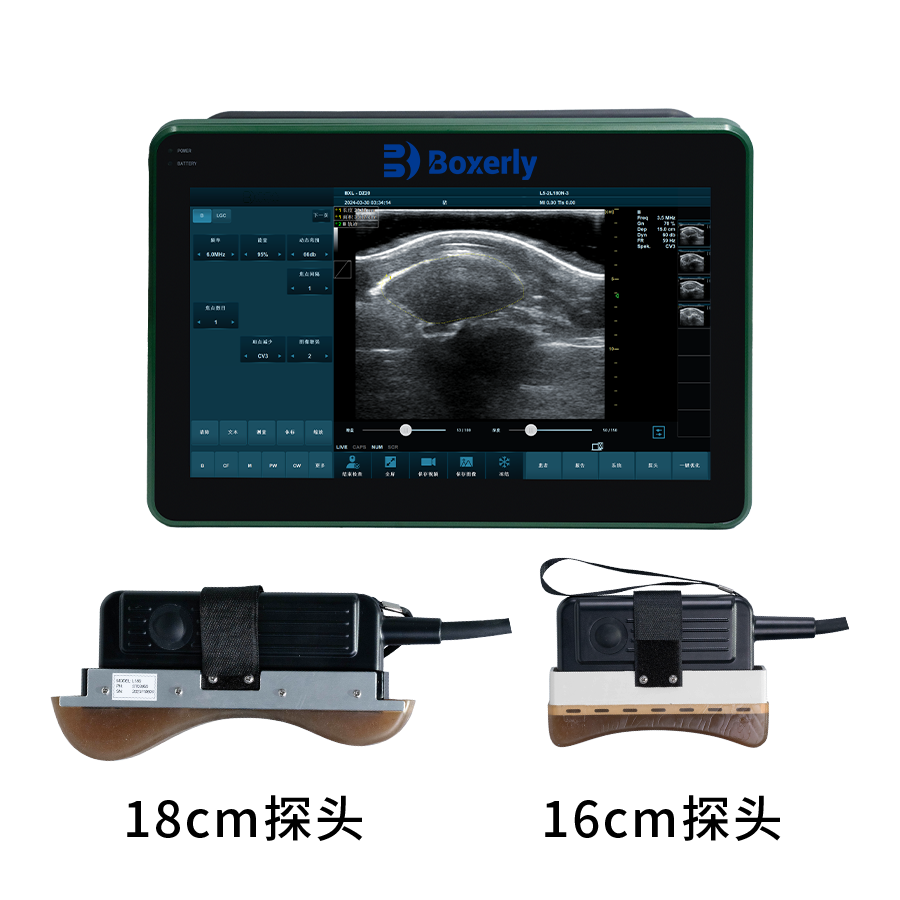Veterinary B-ultrasound microprocessing color display is a new method and technology for veterinary B-ultrasound image display. In the brightness information reflecting the change of echo strength, it is superimposed or converted into a color signal and then re-displayed, which is a way of reflecting the change of echo intensity of different tissues. Its significance lies in adapting to the physiological characteristics of the human eye that has a higher resolution for color changes than for black and white changes. By changing black and white images to color images, we can obtain more information from veterinary B-ultrasound images. In the study of ultrasonic histological characteristics of observing subtle changes in tissue echo intensity, it can effectively expand the visual range and make the observation indicators more accurate.
Click on the image above for product details
Benefits of veterinary B-ultrasound microprocessing color display: Veterinary B-ultrasound color images are clearer and more layered than black and white images, especially for some equal echo masses with similar brightness. Due to the 0.5-level chromaticity difference in color display, it can be distinguished by the human eye. Clinical reports have proved that the diagnosis rate is significantly improved after using a pseudo-color display device, which is worth adopting as an effective supplement to grayscale image display.
Veterinary B-ultrasound BXL-DZ20
Perform veterinary B-ultrasound examinations on animals and compare black and white images with color-scale images. Adjust the various control keys of the veterinary B-ultrasound instrument, and then adjust the microprocessor. First, set the color display to light color, adjust the brightness and contrast, so that the gray scale on the veterinary B-ultrasound image is similar to the gray scale of the host, and then adjust each level in the single color continuous spectrum display one by one. The seven-segment coded measurement unit represents the order of echo changes from strong to weak according to the seven colors.
When there is a problem with the animal's liver, the black and white image of the veterinary B-ultrasound is that the liver light spot is thickened, enhanced, and a reticular structure appears. The color-scale image is a yellow reticular echo band on the liver brown background, and the capsule is a yellow serrated echo. There is a yellow reticular structure on a cyan background.









